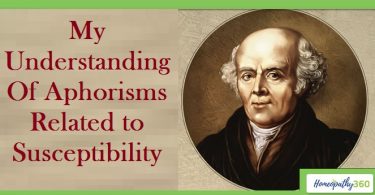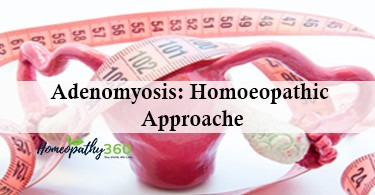ABSTRACT
India is estimated to have the highest snakebite mortality in the world according to World Health Organization (WHO). An estimated risk of an Indian dying from snakebite before age of 70 years is about 1 in 250, but higher in some areas. First aid at the field level includes reassurance, immobilizing the bitten limb and transporting the victim to nearest treatment facility at the earliest where definitive treatment can be provided. Anti-venom therapy is the only scientifically proven treatment for venomous snakebites. Homoeopathic therapeutic system of medicine has a definitive role in management of snakebite for immediate (local tissue injuries, shock, anxiety, palpitation, apprehension, etc.) and chronic effects (poor wound healing, renal dysfunction, central nervous system affections, etc.) of poisoning, This article highlights the role of homoeopathic intervention in management of snakebite to combat local as well as systemic effects of poisoning along with standard snakebite protocol withanti-venom.
KEYWORDS
Snakebite, anti-venom, homoeopathy, neuroparalytic, vaculotoxic, myotoxic.
ABBREVIATIONS
WHO-World Health Organization, e.g.-for example, i.e.-that is, etc.-et cetera.
INTRODUCTION
Snakebites are life threatening injury and require emergency management. Envenomation often follows long-term complication and poor wound healing. It is one of the underreported causes of death and more common in rural areas of India. World Health Organization (WHO) estimates the number of bites to be 83,000 per annum with 11,000 deaths and India is estimated to have the highest snakebite mortality in the world.1India had about 1.2 million snakebite deaths (approximately 58,000/year) from 2000 to 2019. Nearly half occurred at ages 30–69 years and over a quarter in children less than 15 years. About 70% snakebites occurred in eight higher burden states and half of the bites during the rainy season and at low altitude. An estimated risk of an Indian dying from snakebite before age of 70 years is about 1 in 250, but higher in some areas. An estimate of 1.11–1.77 million bites in 2015, of which 70% showed symptoms of envenomation.2
Homoeopathy is an alternative therapeutic system of medicine which has a definite role in management of snakebite for immediate (local tissue injuries, shock, anxiety, palpitation, apprehension, etc.) and chronic effects (poor wound healing, renal dysfunction, central nervous system affections, etc.) of poisoning, following the fundamental law of Homoeopathy “similia similibus curantur”, i.e. “let like be treated by like”. As Master Hahnemann clearly mentioned limitation of the system in dealing with states where there is no sensation or lack of irritability and sensitivity in aphorism 67 ( footnote 1) of Organon of medicine (5th and 6th edition) stating, “only in the most urgent cases, where danger to life and imminent death allow no time for the action of a homoeopathic remedy – not hours, sometimes not even quarter-hours, and scarcely minutes – in sudden accidents occurring to previously healthy individuals…it is admissible and judicious, at all events as a preliminary measure to stimulate the irritability and sensibility (the physical life) with a palliative…… When this stimulation is effected, the play of the vital organs again goes on in its former healthy manner, for there is here no disease to be removed, but merely an obstruction and suppression of the healthy vital force. …To this category belong various antidotes to sudden poisoning.”3
There are cases of non-venomous snakebites, in such cases, approach with reassurance and primary management by homoeopathic intervention can be practised successfully.
Figure
1.Clinical approach in snakebite4
Table-1.Clinical symptomatology of snakebite and standard management
| SNAKES | SYMPTOMS4 | STANDARD MANAGEMENT4 |
| COMMON KRAIT | Neuroparalytic Ptosis,Diplopia DysarthriaDysphoniaDyspneaDysphagiaParalysisWith no local signsSevere abdominal pain, vomiting | Anti-snake venom (ASV)Atropine followed Neostigmine Ventilation |
| INDIAN COBRA | ||
| RUSSELL’S VIPER | Progressive painful swelling Local necrosisEcchymosisBlisteringPainful swellingCompartment syndrome Vasculotoxic Bleeding Disseminated intravascular coagulation(DIC)ShockAcute kidney injury | Anti-snake venom (ASV) Supportive treatment DialysisBlood transfusion |
| SAW-SCALED VIPER | ||
| SEA SNAKE | Myotoxic Muscle acheMuscle swelling Involuntary contraction of musclesCompartment syndrome | Anti-snake venom (ASV) Supportive treatment Dialysis |
Symptoms of poisoning
Symptoms vary according to the variety of the snake, the age, size, health and the site of the bite on the patient.
In the case of bite from a colubrine snake such as a cobra or krait, the immediate local effects are a burning or tingling pain, irritation, redness, swelling and inflammation at the site of bite. Constitutional symptoms follow an interval varying from fifteen minutes to one to two hours by giddiness, lethargy, muscular weakness, drowsiness and a feeling of intoxication. Nausea and vomiting are sometimes the early symptoms. Weakness of the muscles increases and develops into paralysis of the lower limbs thereafter it spreads to the trunks, and affects the head which droops, there is drooping of eyelids also. The muscles of the lips, tongue and throat become gradually paralysed. Speech and swallowing become difficult, and saliva collects in the mouth. The victim is often seen trying to remove the viscid saliva from his mouth with his fingers. Breathing becomes slow and labored, until it stops altogether, the heart continuing to beat for some minutes. Consciousness is retained till the end. Violent abdominal pain and convulsions may precede death due to a bite from a krait. If recovery occurs, some necrosis occurs in the skin and subjacent cellular tissues surrounding the bitten area. Later, the slough separates and leaves a big ulcer.
In case of a bite from viper, such as a daboia or echis, the local signs are pain, swelling, discolouration and ecchymosis in the immediate neighborhood of the site of the bite, and oozing of a bloody serum from the bite, nausea, vomiting and signs of collapse supervene with cold, clammy skin, a small, thready, imperceptible pulse, and dilated pupils, which are insensible to light. These are followed by complete unconsciousness within an hour or two. If the patient recovers from these effects, haemorrhages occur from the mucous membrane of the rectum and other orifices of the body. Extensive local suppuration, sloughing and gangrene, and malignant oedema or tetanus may supervene or death may occur from septicaemia.
In some cases of snakebite, death occurs from shock due to fright before the poisonous symptoms commence.
Snake venom, whether colubrine or viperine, has a haemolytic action on the blood and reduces the power of its coagulability, with the result that a bloody serum continues to ooze out from the wound for many hours. This oozing is more pronounced in viperine envenomation than in colubrine envenomation. In case of intravascular clotting, there may be haemoglobinuria and renal failure. 5
Management
First aid at the field level includes reassurance, immobilisation of the bitten limb and transportation of the victim to nearest treatment facility at the earliest where definite treatment can be provided.6
Standard anti-venom treatment plan
Anti-venom therapy is the only scientifically proven treatment for venomous snakebites.
The anti-venom dose may vary with the degree of envenomation, i.e. mild or severe envenomation. Each vial contains 10 ml of anti-venom. Generally 8–10 vials of anti-venom are required for treating an envenomated patient. However, higher doses (20 vials or more) may be required in very severe cases. It is to be noted that children should receive the same dose of anti-venom as adults.7
Limitation of anti-venom
- Specific anti-venoms are not available in India, a polyvalent anti-venom is routinely used for the treatment of envenomations prepared from the so called ‘big four’ snakes: the spectacled cobra (Naja naja), common krait (Bungarus caeruleus), Russell’s viper (Daboia russelii), and saw-scaled viper (Echis carinatus).Although in addition to the “big four” India is abode to many other species of venomous snakes that have the potential to inflict severe clinical or, even, lethal envenomations.7,8
- Anti-venom is very expensive and in short-supply. 7,8
- Since, anti-venom is raised in horses; the antibodies are foreign to the human body. It usually leads to adverse serum reactions. Anaphylaxis is a life-threatening condition that can occur due to anti-venom reactions. 7,8
- Anti-venom is of limited effectiveness against the effects of local envenoming that develop rapidly after a bite which includes severe pain, oedema, localised haemorrhage, and necrosis. And it often results in permanent scarring and deformity.9,10
Homoeopathic approach
According to Stuart Close, “The destructive action of certain chemical poisons, although all such agents have also secondary dynamical effects, diseases arising from these causes require the use of chemical or physiological antidotes, combined in some cases with measures for the physical expulsion of the offending substances, and followed by homoeopathic treatment for the functional derangements which remain or follow.”11
Repertorial indications for snakebite
Complete Repertory,4.5 by Van Zandvoort R.
GENERALITIES – WOUNDS – bites, snakes: (46) acet-ac.,am-c.,am-caust. ,anag. ,anthraci. ,Apis. ,arist-cl.,arn.,Ars.,aur.,Bell.,calad.,Camph.,cean.,Cedr., cinnm., crot-h.,dor.,Echi.,euph-po., euph-pr.,Grin., gua.,gymne., hippoz., hydra-ac.,Hyper., iod., kali-perm.,LACH.,LED., lob-p.,lycps-v.,merc.,mosch., ph-ac., plan.,pyrog., seneg.,sisy. spirae.,stram.,sul-ac.,Thuj., urt-u.,Vip.
Synthesis 9.0. by Schroyens F.
GENERALS
– WOUNDS – bites, snakes,
of: (50) am-c. am-caust. anag. Apisarist-cl.arn.Ars.aur. Bell.bid-p. calad.
Camph.cassia-o. Cedr.cench. Chen-o.cissu-d.clerod-g.Echi.euph-po,euph-pr. gua. guaj.gymne. hyper. indg. ipom-f.
kali-perm. LACH.LED.leont-l.leont
-o. lob-p. lycps-v. mik-c. plan. secul-l.Sela.Seneg.sima.sisy.sol-cp.
Stram. strych-g. strych-s.sul-ac.thalic-r. Thuj.viol-o.
Vip.
Boericke W. New Manual of Homoeopathic Materia Medica and Repertory by Oscar E. Boericke12
Generalities, bites, insects, snakes, dogs -Acet. ac., Am. c., Am. caust., Anthrac., Apis, Arn., Ars., Bell., Calad., Camph., Ced., Crot., Echin., Golond., Grind., Guaco, Gymnen., Hydroc. ac., Hyper., Kali perm., Lach., Led., Mosch., Pyr., Salag., Sisyr., Spirća, Trychnos.
Indications of few homoeopathic medicines for snakebite 12,13,14
- Apis mellifica
Causation- allergens, bites
Inflammation with effusion.
Allergic reaction to bee or wasp stings, burning, stinging, prickling, sharp pain with excessive swelling.
Allergic oedema of face, eyelids, lips, mouth and throat.
Rosy red, sensitive, sore skin.
Erysipelas with sensitiveness and swelling.
- Arsenicum
album
Causation- ill effects of poisoning, dissecting wounds.
Skin peels off in large scales.
Itching, burning, swellings.
Brownish-white spots on skin
Dry, rough, scaly, dirty, shrivelled.
Miliary eruptions, petechiae, malignant pustules.
Poisoned wounds, scirrhus, gangrene.
Ulcers with high edges, discharging black, coagulated blood.
Sensation of coldness in ulcers.
Great fear of death.
Extreme restlessness, marked weakness, rapid loss of weight, coldness and lack of vital heat.
- Camphor
Causation- ill effects of shock from injury, operations, sunstroke, snakebites.
Dryness of skin, bluish, cold, with coldness of whole body.
Erysipelas, skin sensitive to the slightest touch.
Useful as a heart stimulant for emergency use.
Shock, state of collapse.
Sudden collapse from overpowering influences acting on nervous centres.
Icy coldness of whole body, sudden sinking of strength.
Pulse small and weak.
Trembling and extreme restlessness.
Convulsions with blue lips, froth at mouth and lock-jaw.
- Cedron
Causation- ill effects of insect bites, snakebites
Consider as a specific for the bites of venomous snakes in Panama – Dr Hughes.
Exact periodicity; clock like periodicity.
Symptoms return at exactly the same hour every day.
Numb dead feeling in legs, they feel enlarged.
Lancinating pains, cramps, contracting pain, bruised sensation.
Icy coldness of extremities.
- Echinacea angustifolia
Causation- insect bites, snakebites, poisonous plants.
Venom infections, snakebites.
Recurring boils, carbuncles, lymphangitis, tibial ulcers, gangrene.
Septic conditions, blood poisoning.
Eases pain at last stages.
Breaks the boil habit – Dr Farrington.
- Hypericum perforatum
Causation- fright, shock- bites, wounds.
Injured nerves from bites of animals.
Hyperhiderosis, intense itching, old ulcers or sores, very sensitive.
Lacerated wounds with marked prostration from loss of blood.
Lymphangitis with red lines or streaks extending up the arm or legs.
Violent, shooting, lancinating pains.
Skin rough, feels as if full of small knots.
Neuritic, tingling, burning pain, numbness and glossy skin.
- Lachesis mutus
Causation- ill effects of puncture wounds, bites.
Bluish, purplish appearance, blue-black swellings.
Cellulitis, burning ulcers at night, ulcers sensitive to touch.
Small wounds bleed much.
Scars, redden, hurt, break open and bleed.
Snakebites and infected wounds.
Excessive sensitiveness of the skin with intolerance to touch or constriction.
Pain as if burnt. Cyanosis.
- Ledum palustre
Causation- ill effects of punctured wounds, animal and insect bites, stings, bruises.
Punctured, stab wounds.
Animal bites and insect stings.
Ecchymossis, long discolouration after injuries.
Twitches, from bites, nails, stings with foul pus.
Red spots and rash.
Carbuncles, oedematous swellings.
Indicated particularly if septic in appearance.
Injured part feels cold, wounded area can emaciate.
Wounds, better with cold application.
Conclusion
Homoeopathic approach as a
complementary management in cases of snakebites for local tissue injuries as
well as systemic manifestations, may be considered along with standard anti-venom
treatment plan. It needs research for validation, as a very few evidences are
recorded in homoeopathic literature. This review gives a wide view in approach
of management of snakebite with the scientific homoeopathic medicinal system.
References
1. Kasturiratne A, Wickramsinghe AR, DeSilva N, et al. The global burden of snakebite: A literature analysis and modelling based on regional estimates of envenoming and deaths. PLOS Med. 2008;5:e218.
2.eLife. 2020. Trends In Snakebite Deaths In India From 2000 To 2019 In A Nationally Representative Mortality Study. [online] Available at: <https://elifesciences.org/articles/54076> [Accessed 4 December 2020].
3.Hahnemann S. Organon of medicine. 5th ed. New Delhi: B. Jain Publishers; 2011.
4. [Internet]. Nhm.gov.in. 2020 [cited 3 December 2020]. Available from: https://nhm.gov.in/images/pdf/guidelines/nrhm-guidelines/stg/Snakebite_QRG.pdf
5.Modi J. Modi’s Medical Jurisprudence & Toxicology. 22nd ed. New Delhi: LexisNexis; 2002.268-269.
6. Singh S, Singh G. Snakebite: Indian Guidelines and Protocol [Internet]. Apiindia.org. [cited 4 December 2020]. Available from: http://apiindia.org/wpcontent/uploads/medicine_update_2013/chap94.pdf
7. SenjiLaxme R, Khochare S, de Souza H, Ahuja B, Suranse V, Martin G et al. Beyond the ‘big four’: Venom profiling of the medically important yet neglected Indian snakes reveals disturbing anti-venom deficiencies [Internet]. 2020 [cited 5 December 2020]. Available from: https://journals.plos.org/plosntds/article?id=10.1371/journal.pntd.0007899#sec029
8.Bharati K. Snake, Snakebite and its Management – The Indian Scenario.Indian Science Cruiser [Internet]. 2018 [cited 4 December 2020];32(6):45. Available from: https://www.researchgate.net/publication/332039867_Snake_Snakebite_and_its_Management_-_The_Indian_Scenario
9.Lalloo.D, D.G. Theakston D.G, J. Toxicol., 2003, 41(3), 277-290.
10.Warrell D.A, Davidson N.M, Greenwood B.M, Ormerod .L,Pope H.M, Watkins.J, Quart. J. Med., 1977, 46(181), 33-62.
11. Close S. The Genius of Homoeopathy. New Delhi, India: Indian Books & Periodicals Publishers; reprint. 2010; 2.
12. Boericke W. New Manual of Homoeopathic MateriaMedica and Repertory (With Relationship of Remedies).Augmented Edition based on 9th ed.NewDelhi.B.Jain Publishers(P)Ltd.;2000.
13. Clarke, J.H. A Dictionary of Practical MateriaMedica. New Delhi : B. Jain Publishers; 1999.
14. Murphy R. Lotus materia medica. Pagosa Springs, Colo.: Lotus Star Academy; 1995.
About the authors
- Principal, Professor ,HOD-Department of Homoeopathic Pharmacy, Bakson Homoeopathic Medical College & Hospital, Greater Noida , U.P.
- Professor ,HOD-Department of Forensic Medicine & Toxicology, Bakson Homoeopathic Medical College & Hospital, Greater Noida , U.P.
- Associate Professor, HOD-Department of Community Medicine, Bakson Homoeopathic Medical College & Hospital, Greater Noida , U.P.
- Assistant Professor, Department of Forensic Medicine & Toxicology ,Bakson Homoeopathic Medical College & Hospital, Greater Noida , U.P.





